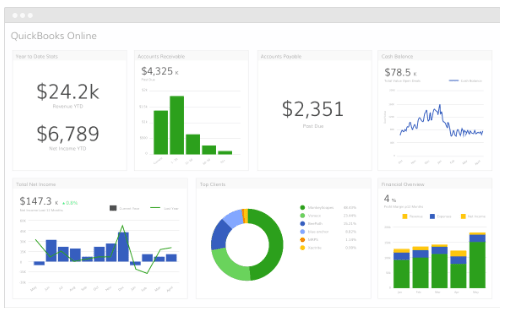
We don’t want the 2015 revenue account to show 2014 revenue numbers. Clear the balance of the expense accounts by debiting income summary and crediting the corresponding expenses. Suppose a business had the following trial balance before any closing journal entries at the end of an accounting period.

Sole Proprietorship: How to Start One (Pros and Cons)

Likewise, all revenue accounts and all expenses accounts will be closed by transferring all revenues and expenses to the income summary account. Closing entries are journal entries made at the end of accounting periods that involve transferring data from temporary accounting on the temporary accounts on the income statement to permanent accounts. Now that all the temporary accounts are closed, the income summary account should have a balance equal to QuickBooks the net income shown on Paul’s income statement. Now Paul must close the income summary account to retained earnings in the next step of the closing entries.
- Let’s explore each entry in more detail using Printing Plus’s information from Analyzing and Recording Transactions and The Adjustment Process as our example.
- All temporary accounts must be reset to zero at the end of the accounting period.
- For example, if Rent Expense has a balance of $1,000, you would credit Rent Expense for $1,000 and debit Income Summary for $1,000.
- One account you’ll want to be aware of when performing closing entries is the income summary account.
- To further clarify this concept, balances are closed to assureall revenues and expenses are recorded in the proper period andthen start over the following period.
Closing Entries Accounting with Automation
After the income statement is created, the final income income summary account summary balance is transferred to retained profits or capital accounts. This income balance is subsequently reflected in the balance sheet’s owner’s equity section. The purpose of the income summary is to show the net income (revenue less expenses) of the business in more detail before it becomes part of the retained earnings account balance.
- So they're temporary because they're only related to that time period, and those are generally going to be our income statement accounts for the most part.
- Clear the balance of the expense accounts by debiting income summary and crediting the corresponding expenses.
- A closing entry is a journal entry made at the end of an accounting period.
- Printing Plus has $140 of interest revenue and $10,100 of service revenue, each with a credit balance on the adjusted trial balance.
- During the accounting period, you earned $5,000 in revenue and had $2,500 in expenses.
- Then, head over to our guide on journalizing transactions, with definitions and examples for business.
Does the income summary have a normal balance?
In this example we will close Paul’s Guitar Shop, Inc.’s temporary accounts using the income summary account method from his financial statements in the previous example. Both closing entries are acceptable and both result in the same outcome. All temporary accounts eventually get closed to retained earnings and are presented on the balance sheet. Closing all temporary accounts Cash Flow Management for Small Businesses to the retained earnings account is faster than using the income summary account method because it saves a step. There is no need to close temporary accounts to another temporary account (income summary account) in order to then close that again.
Post the transactions to the income summary account and close the income summary account. HighRadius Autonomous Accounting Application consists of End-to-end Financial Close Automation, AI-powered Anomaly Detection and Account Reconciliation, and Connected Workspaces. Delivered as SaaS, our solutions seamlessly integrate bi-directionally with multiple systems including ERPs, HR, CRM, Payroll, and banks. It may be assumed that the income summary normal balance is on the credit side as this refers that the company expects the net income at the end of the period, in which it usually does expect that. Think back to all the journal entries you’ve completed so far.

The balance in a company’s income summary account must be transferred to retained earnings to take the amount off the company’s books. The income summary account is a temporary account used to store income statement account balances, revenue and expense accounts, during the closing entry step of the accounting cycle. In other words, the income summary account is simply a placeholder for account balances at the end of the accounting period while closing entries are being made. The income summary account is a temporary account into which all income statement revenue and expense accounts are placed at the end of an accounting period. The net amount put into this account equals the business’s net profit or loss for the period. Shifting revenue out of the income statement, therefore, entails debiting the revenue account for the total amount of revenue recorded in the period and crediting the income summary account.

Here are MacroAuto’s accounting records simplified, using positive numbers for increases and negative numbers for decreases instead of debits and credits in order to save room and to get a higher-level view. Also, there are only a handful of transactions each year. Let us understand the advantages of passing income summary closing entries for an organization or an individual through the points below. What else went into the calculation of Retained Earnings?